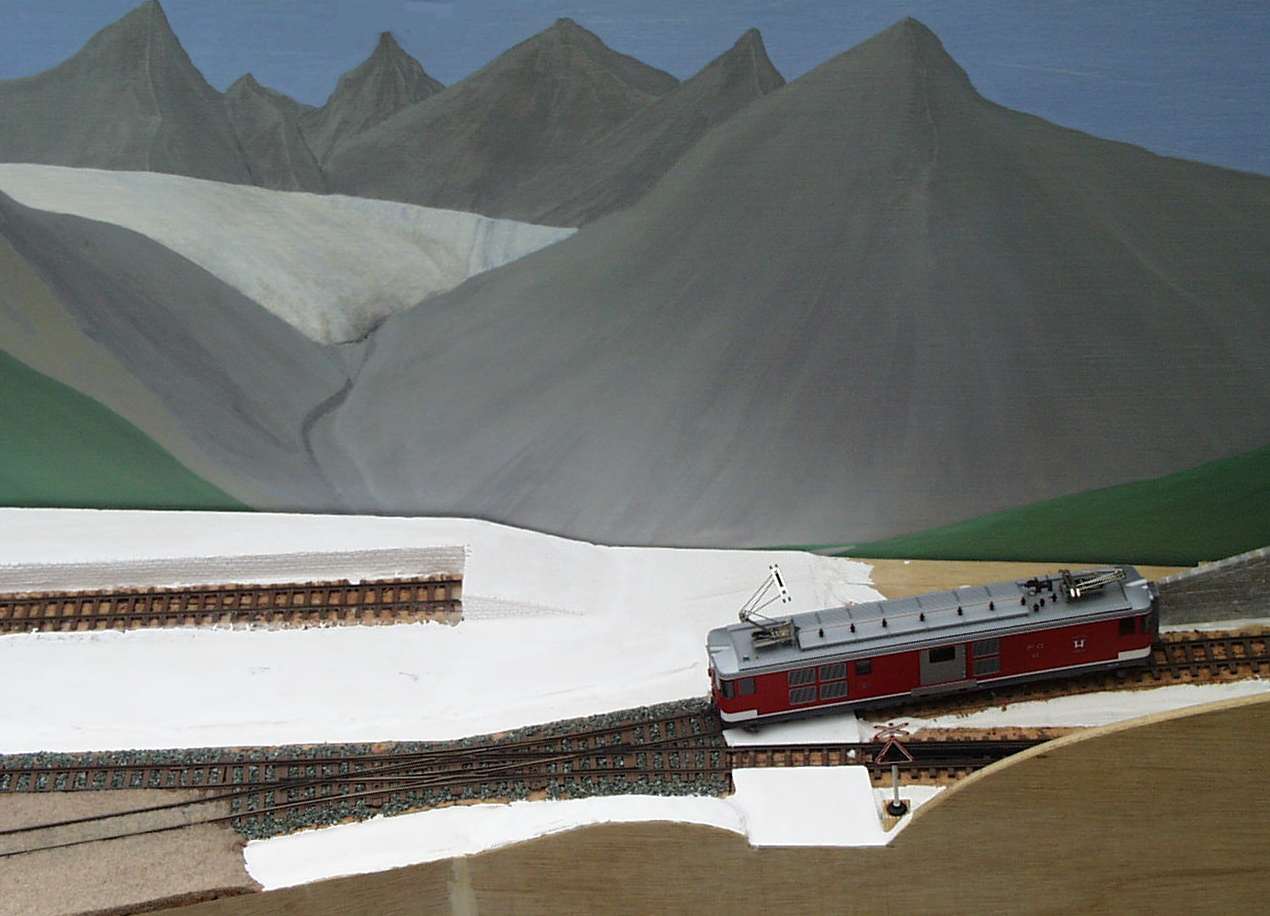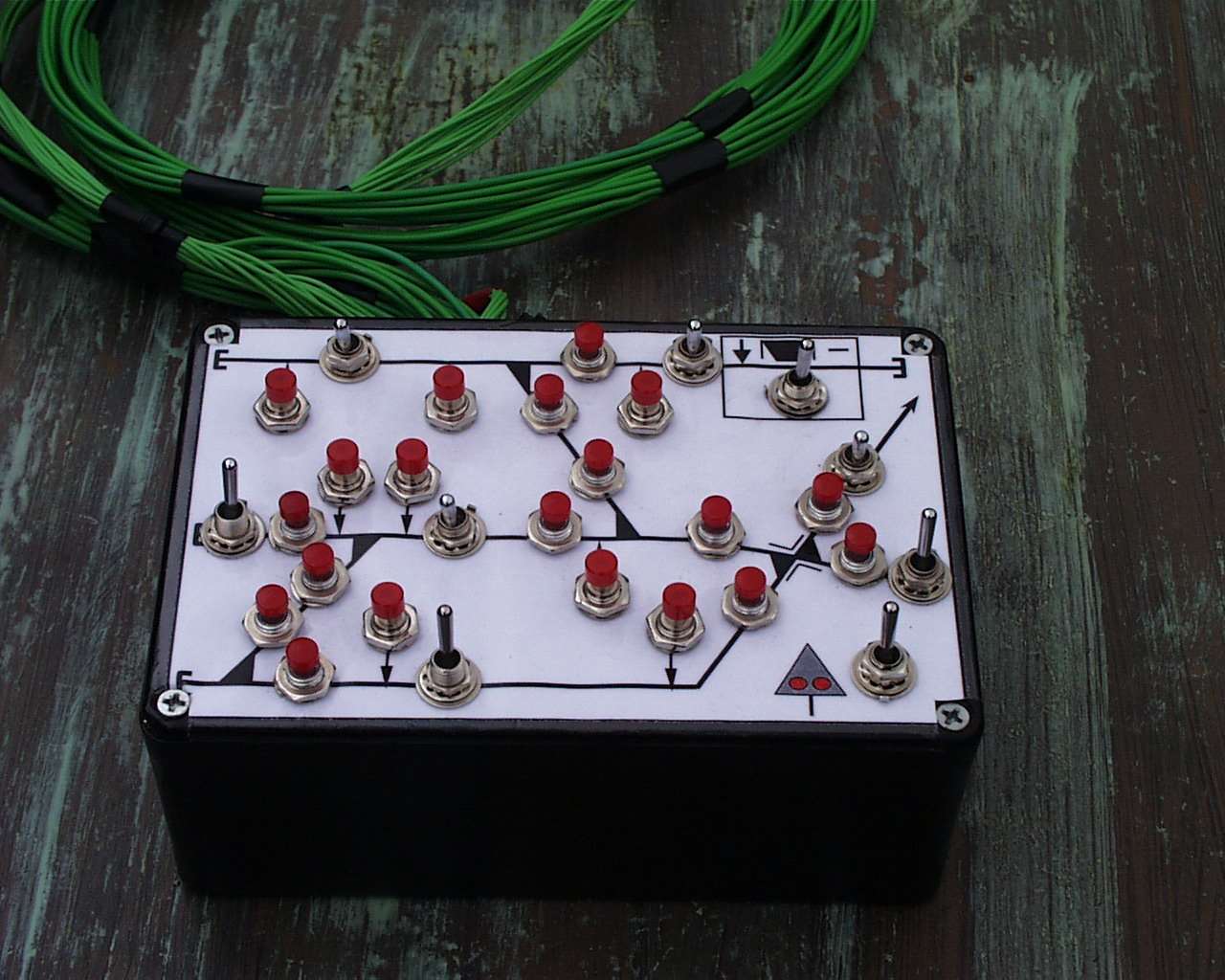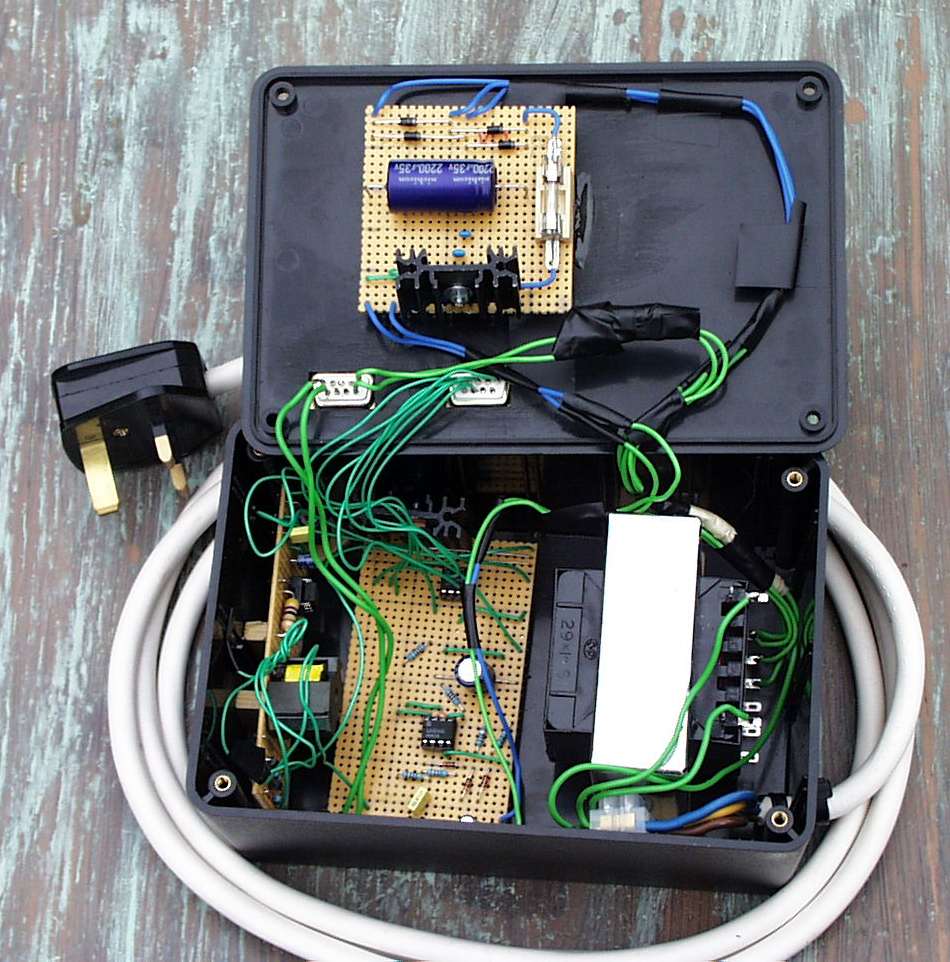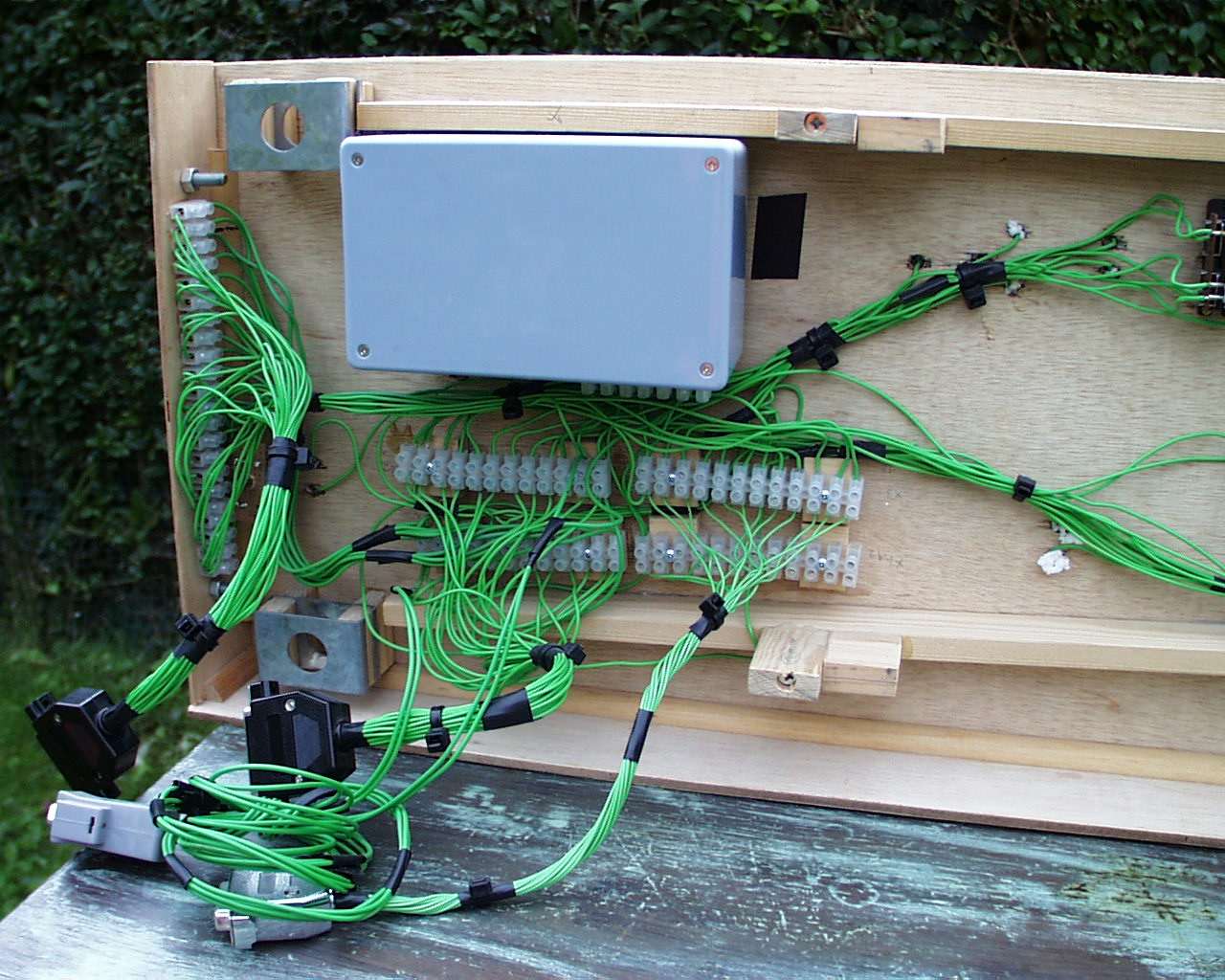
Home | Story | Layout | Structures | Operation | Fiddle Yard | Pictures | Animations | Snow Clearing | Links
Layout construction
This layout is my first exhibition layout. I started construction in 1996 with the two modules for the train station. The modules are made out of 4mm thick plywood sheets which were reinforced with pinewood strips to form a sturdy and rigid structure. The weight of the modules are very low, so that setting-up can be managed by one person.
Tracks & points:
The tracks and points are all from the BEMO code 70 range. The tracks are glued on a cork bed which is itself glued onto the plywood base. Tracks were painted rusty with a blend of HUMBROL colours, balasted with the common water-PVA glue method and finally weathered with water based acrylics paint. A particularity of rack operated railways is the black greasy spur in the middle of the track which was Finally, I spent quite a lot of time weathering the track: gray, rust and of course black for the greasy spur in the middle of the track!
The points are all driven by PECO electromagnetic point motors. For the polarisation of points I use the auxiliary switches from PECO which can be attached to the motors. At the beginning I had problems with the blades being not safely kept in position. I remedied this, by wedging some polystyrene into the point motor and creating some additional friction for the movement of the points.
Civil structures:
For the goods shed and the retention walls I used as basic structure balsa wood. This wood was covered with plaster. Carving the individual stones into the dried plaster created a lot of work but the result is very satisfying. Colouring is still outstanding: I plan to use some heavly diluated Acrylic paint.
Plaster is also used for the construction of the main roads. For the track in front of the loading platform I plan to use some real dirt.
Pict. 1: View of the goods shed

Pict. 2: View of the unfinished scenery on the righ side of the layout

Pict. 3: Tunnels out of balsa wood and plaster

Landscape:
The sceenery was modelled in the usual way: hotwire carved Styropor form the basis. Real soil gathered in the Alps was then sprinkled over the coloured plaster shell covering the Styropor. Various sorts of scattering material will be used for modelling the vegetation.
The modelling of rock formation on the left hand side of the layout followed my own rock casting method: a description of this method can be found here.
Backdrop:
I have tried to recreate the view seen when standing in Gletsch (the real station on the old Furka line) looking over towards the Rhone Glacier. The scene was painted on primed plywood using Acrylic paint diluted with white "eggshell" emulsion. This paint proved ideal for painting large areas like the sky, but was unsuitable for painting fine details.
Pict. 1: Leftside backdrop

Pict. 2: Rightside backdrop with Rhone glacier

Electrical:
The station is controlled from a little controll panel. The power supply to the individual tracks can be switched-off from this panel. The walk-around throttle used is a self made item. I use pulse width modulation which allows the engines to run at a very slow speed and shunt with very high precision. An additional circuitry incorporates a "track cleaner" which is supposed to enhance the reliable operation of the layout.
A total of 8 electromagnetic uncouplers have been implemented under the track so the couplings on the carriages can be uncoupled from remote.
The power for the point motors is generated in a capacitor discharge unit.
Pict. 1: Control panel

Pict. 2: Walkaround throttle and electronic controller

Pict. 3: A view inside the electronic controller

Pict. 4: View of the underside of one of the two modules. The gray box houses the electronics for the capacitor discharge unit and the power supply for the electromagnetic uncouplers.

Home | Story | Layout | Structures | Operation | Fiddle Yard | Pictures | Animations | Snow Clearing | Links